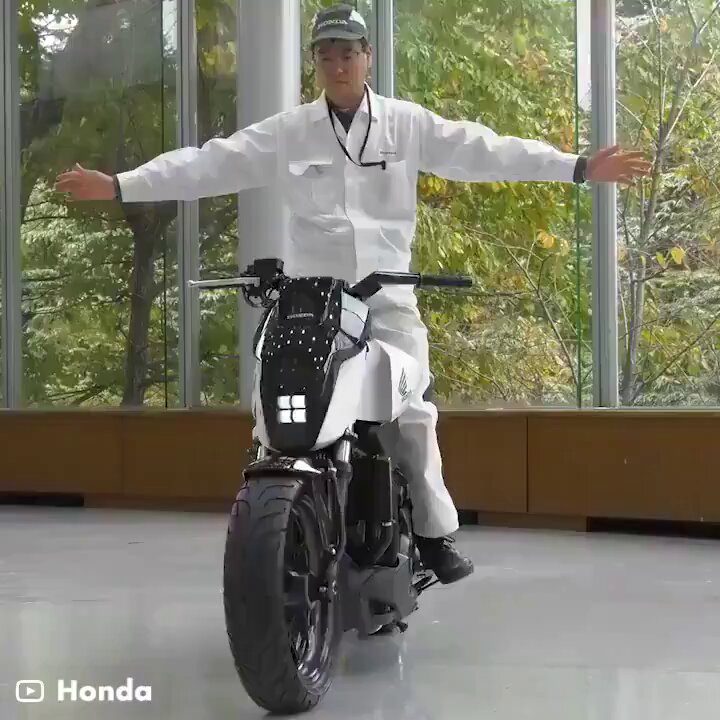In the ever-evolving world of automotive technology, Honda has once again pushed the boundaries of innovation with its self-balancing motorcycle. This groundbreaking development, highlighted by @gigadgets_, showcases the intersection of artificial intelligence (AI), transport, and cutting-edge technology, promising to redefine the future of two-wheeled transport.
The Technology Behind the Self-Balancing Motorcycle
Honda’s self-balancing motorcycle leverages advanced AI and gyroscopic technology to maintain balance autonomously. This innovation is particularly beneficial for new riders and those who struggle with balance, providing an extra layer of safety and confidence. The motorcycle can stand upright without any human intervention, even when stationary, thanks to its sophisticated balance control system.
How It Works
The self-balancing mechanism is integrated into the motorcycle’s frame, utilizing sensors and actuators to detect and correct any imbalance. The AI algorithms continuously process data from these sensors to make real-time adjustments, ensuring the motorcycle remains upright. This technology is akin to the balance systems used in modern drones and advanced robotics.
Implications for the Automotive Industry
The introduction of self-balancing motorcycles has far-reaching implications for the automotive industry. It not only enhances rider safety but also opens up new possibilities for motorcycle design and functionality. Here are some potential impacts:
- Increased Safety: By preventing falls and maintaining stability, self-balancing motorcycles can significantly reduce the risk of accidents, especially at low speeds or when stopping.
- Accessibility: This technology makes motorcycles more accessible to a broader audience, including those who may have previously been deterred by balance concerns.
- Urban Mobility: Self-balancing motorcycles could become a key component of urban mobility solutions, offering a compact and efficient alternative to traditional vehicles.
Honda’s Broader AI Initiatives
Honda’s commitment to AI and automation extends beyond self-balancing motorcycles. Recently, Honda Cars India partnered with IIT Delhi to enhance its AI driving assistance tools. This collaboration aims to advance Honda’s Cooperative Intelligence technology, focusing on reducing traffic collisions and enabling automated driving. Engineers from both entities are engaging in joint research, utilizing cutting-edge AI technologies for future driver assistance and automated driving solutions. Read more.
The Future of Autonomous Vehicles
The development of self-balancing motorcycles is part of a broader trend towards autonomous vehicles. Companies like Tesla and Google are heavily investing in AI and robotics to create fully autonomous cars and robots capable of performing complex tasks. For instance, Google DeepMind has been working on teaching robots to perform dexterous tasks by watching humans, a breakthrough that could revolutionize the robotics industry. Read more.
Autonomous Driving and Robotics
The integration of AI in autonomous driving is not limited to four-wheeled vehicles. Humanoid robots, such as those developed by Figure AI and showcased by Toyota, are being designed to drive cars and perform various tasks with minimal internet connectivity. These advancements highlight the potential for humanoid robots to assist in autonomous driving and other applications. Read more.
Conclusion
Honda’s self-balancing motorcycle is a testament to the transformative power of AI and technology in the automotive industry. As we move towards a future where autonomous vehicles and advanced robotics become commonplace, innovations like these will play a crucial role in shaping safer, more accessible, and efficient modes of transport. The journey of integrating AI into everyday mobility is just beginning, and Honda’s latest innovation is a significant milestone in this exciting evolution.
Check out more AI tools.
Elevate Guest Experience with RoomGenie
Textify Analytics – Affordable Insights at the Speed of AI
